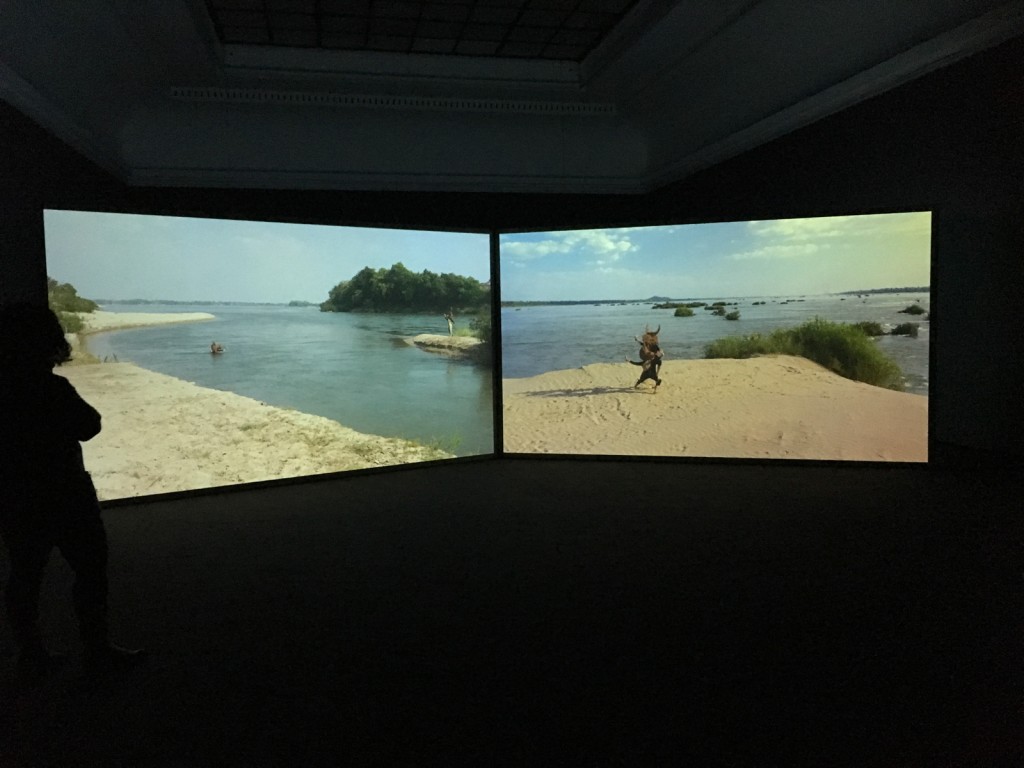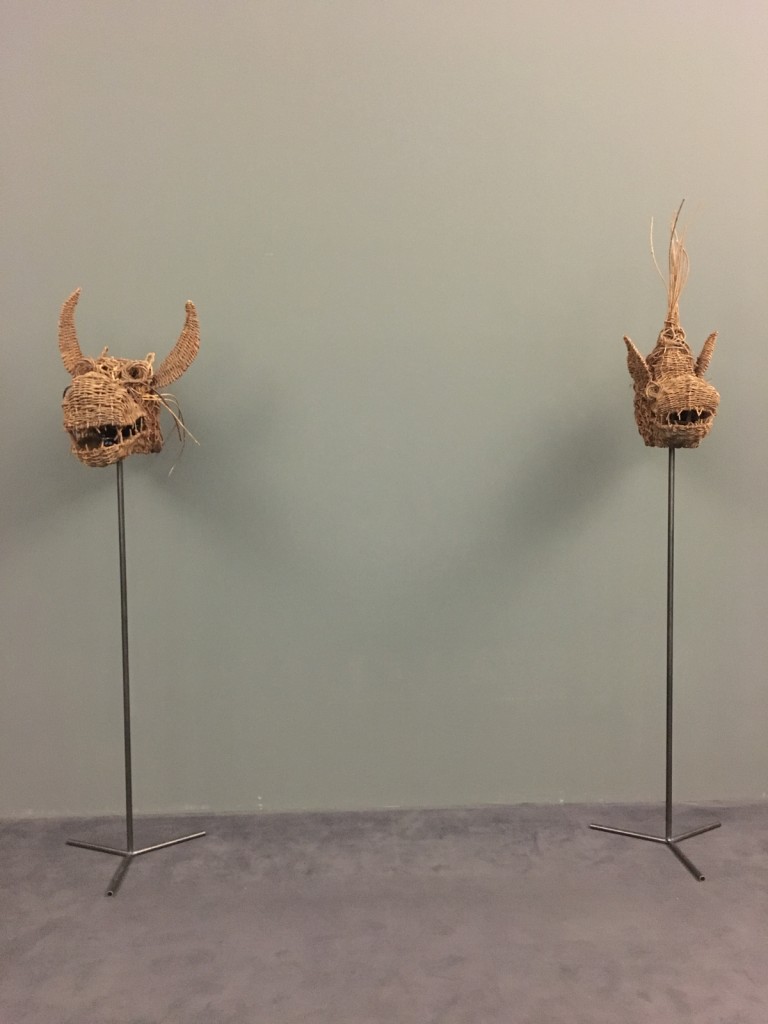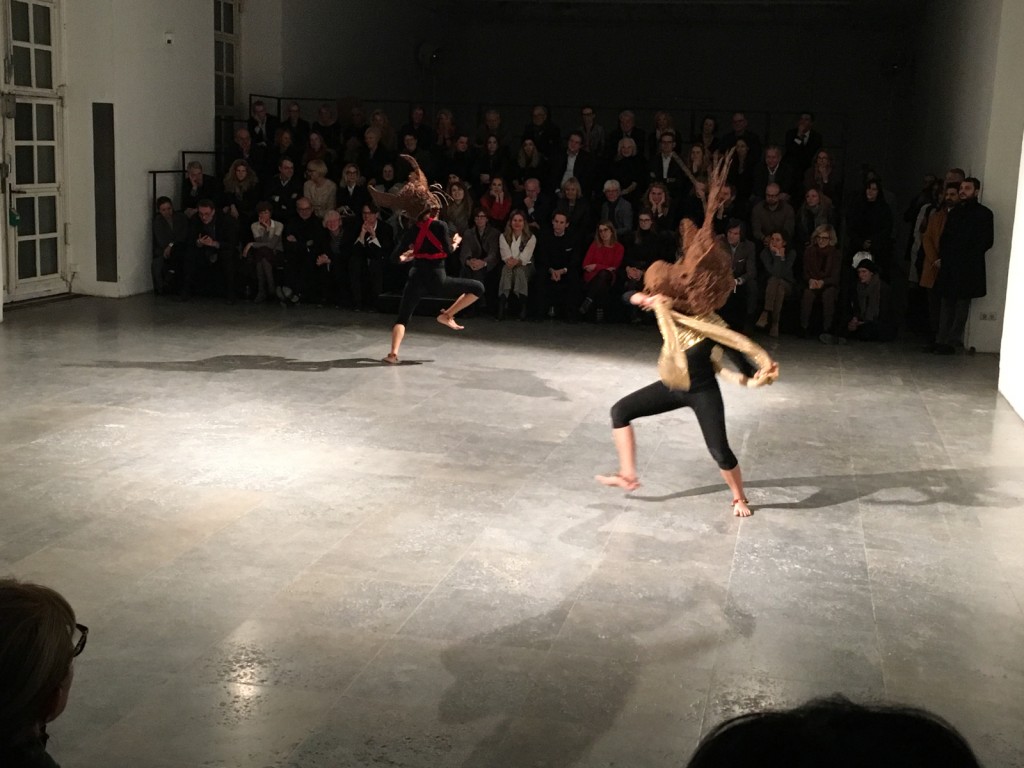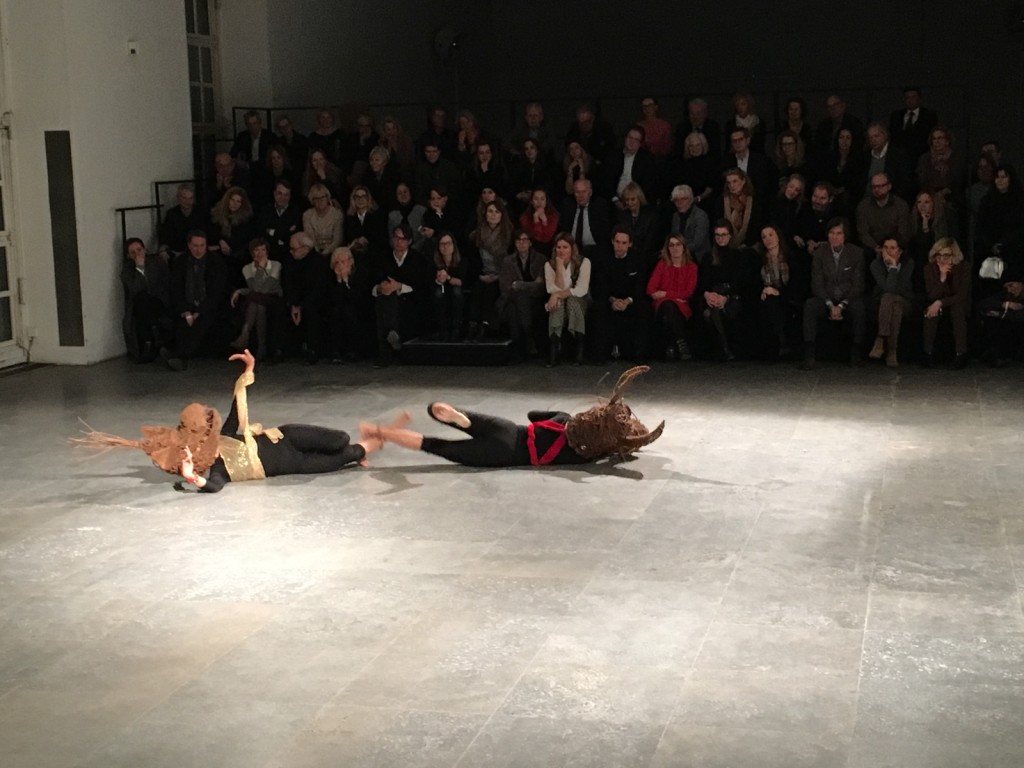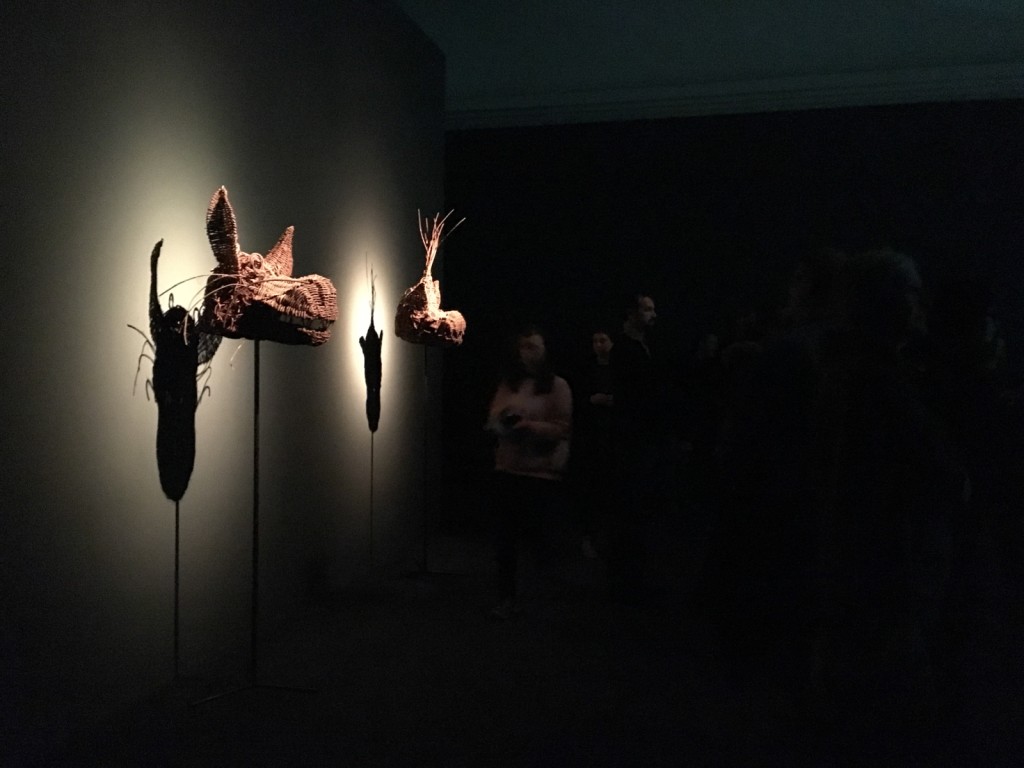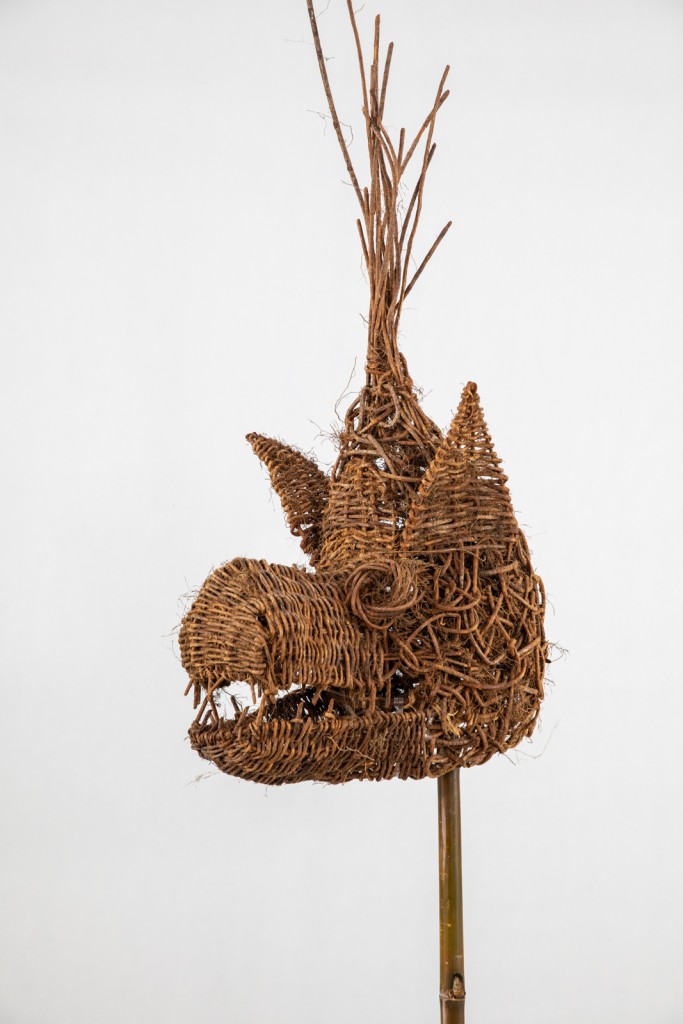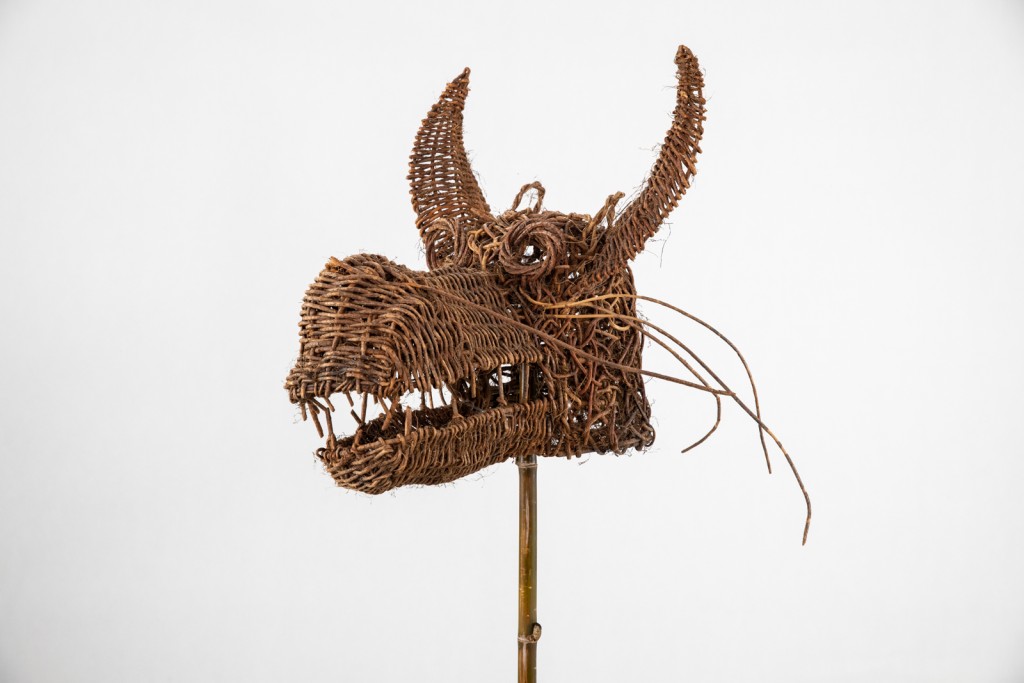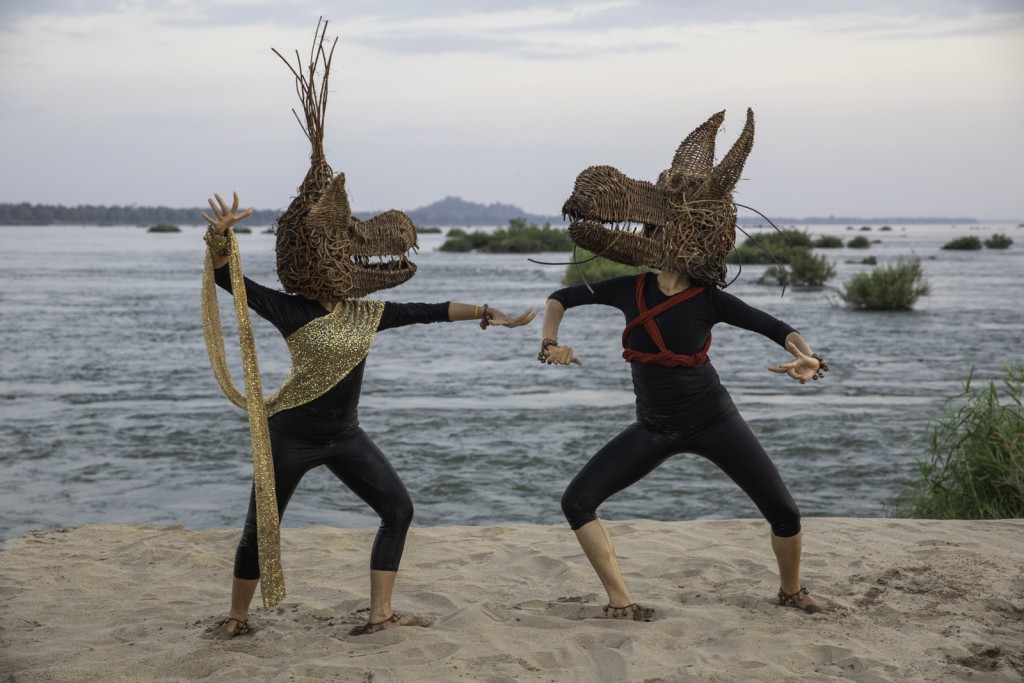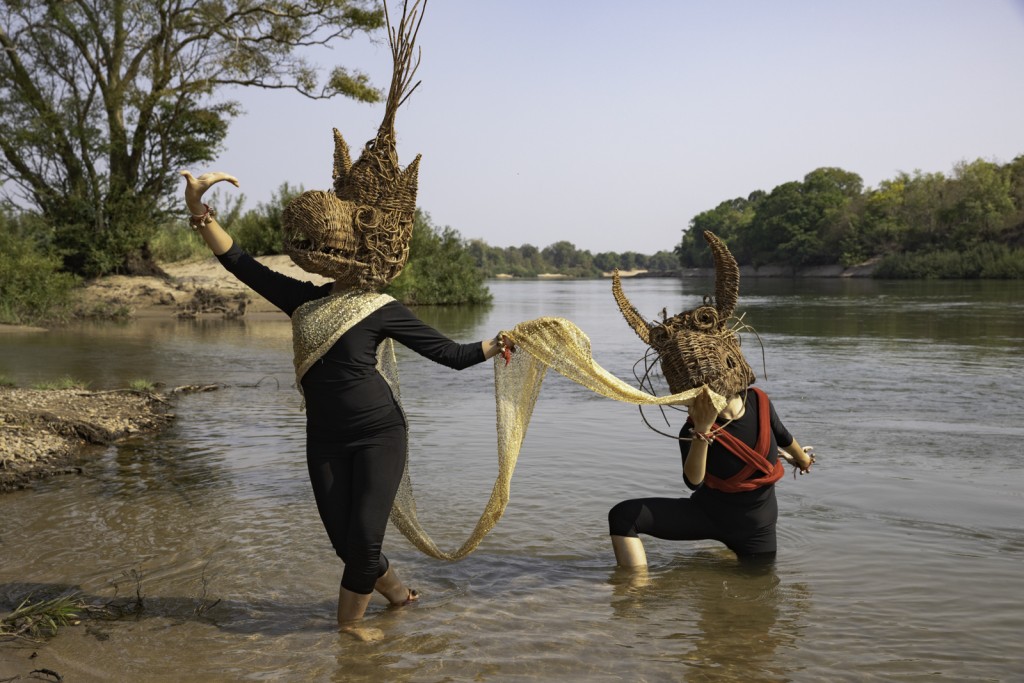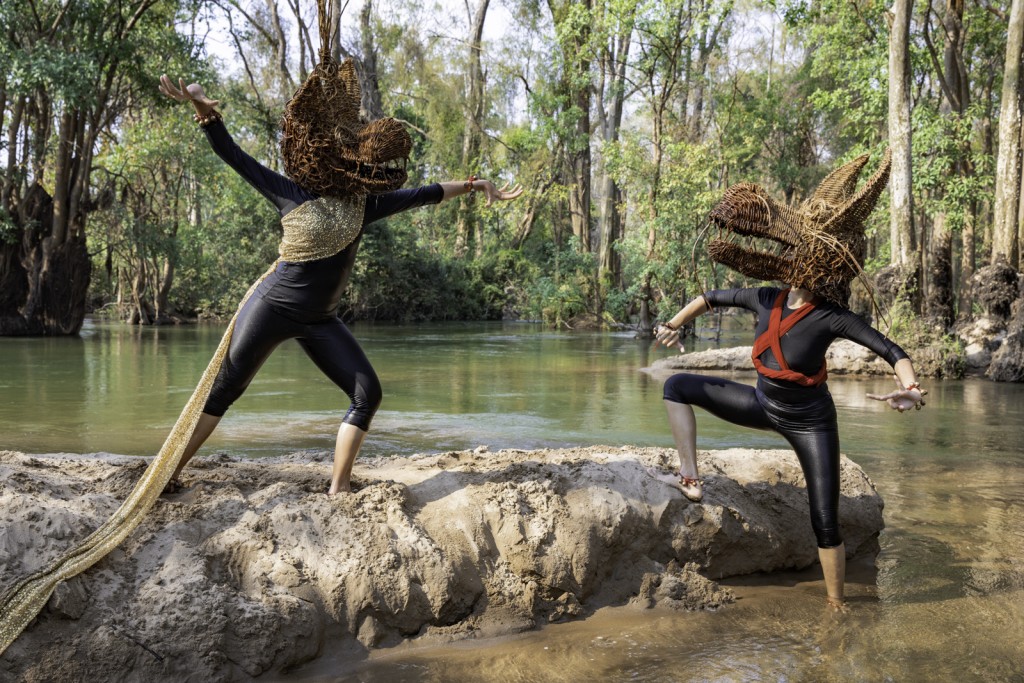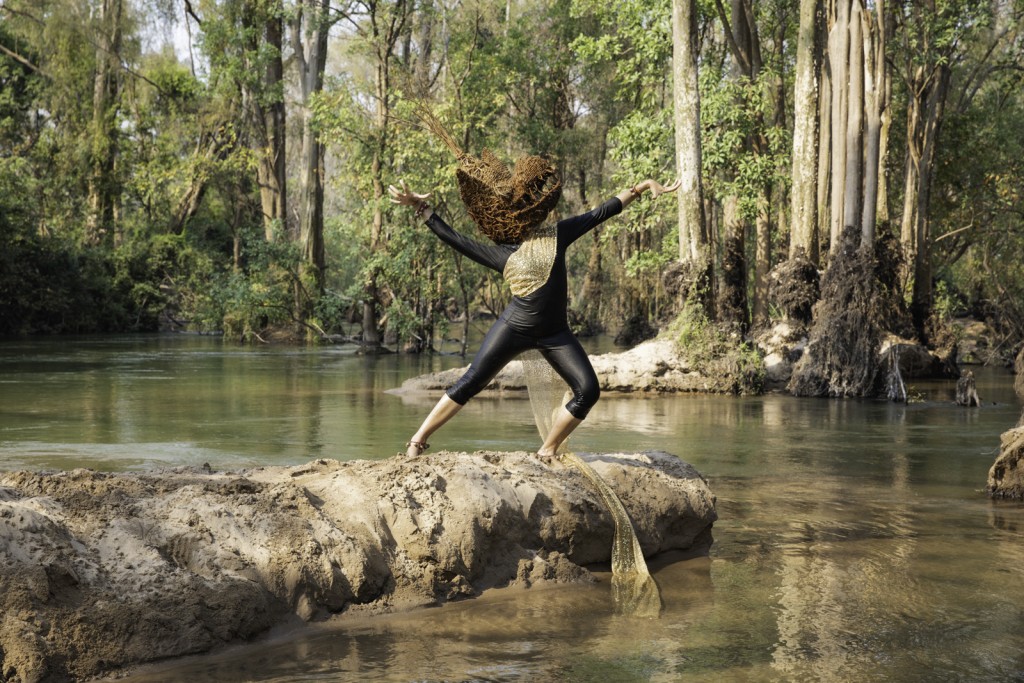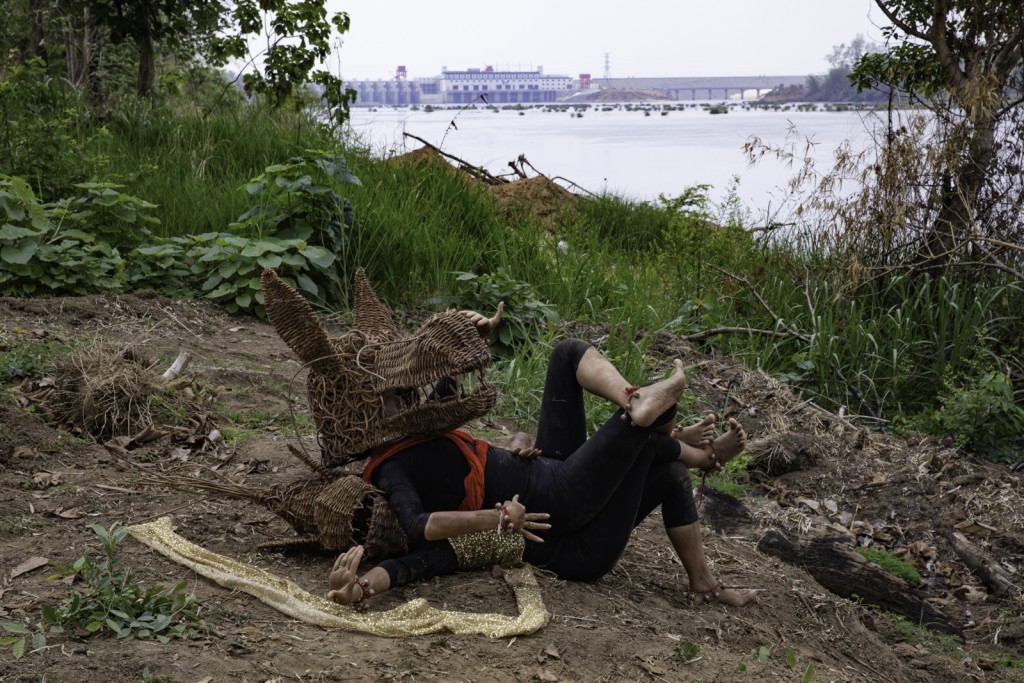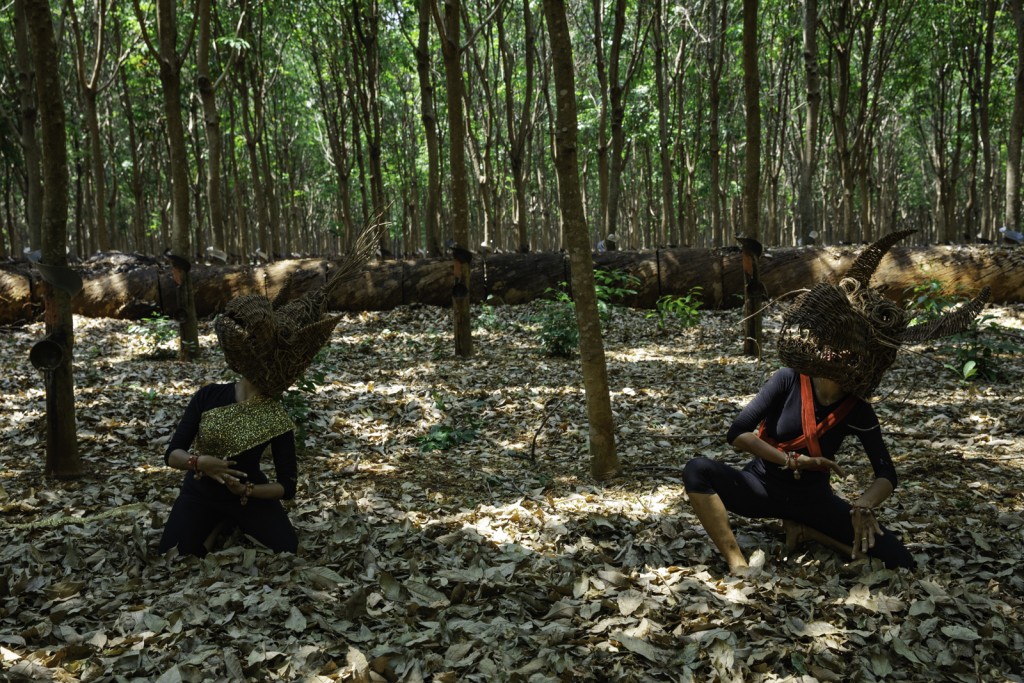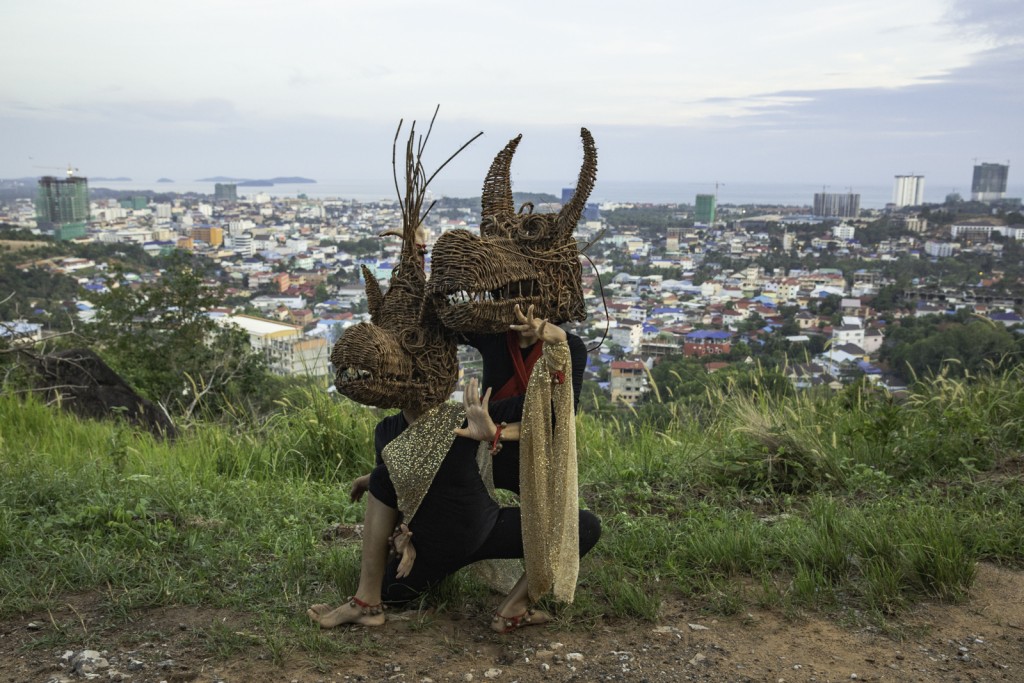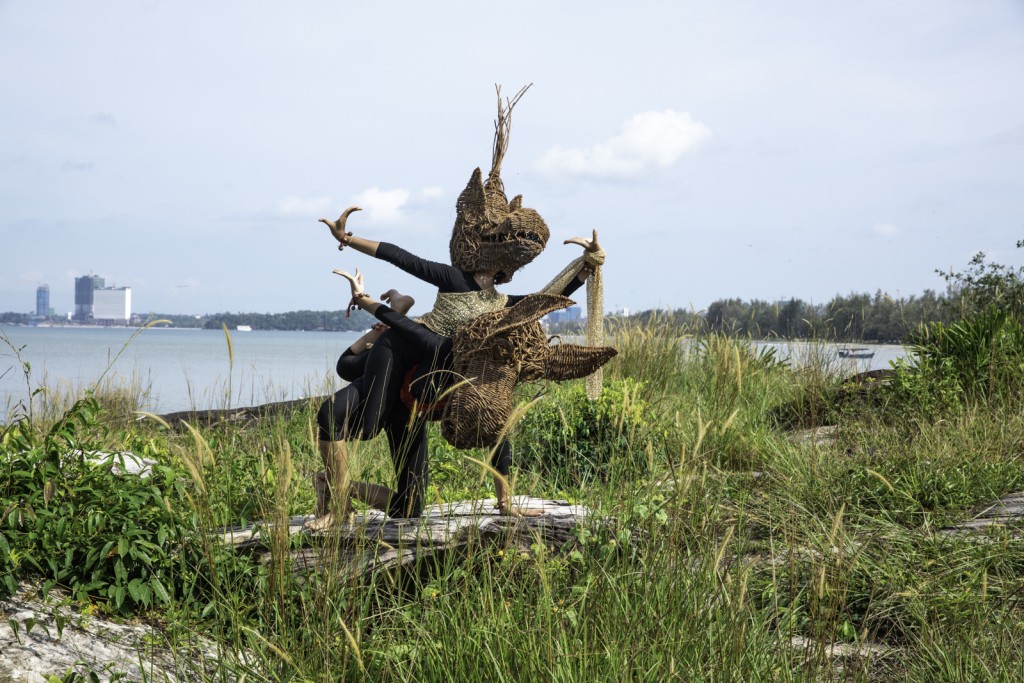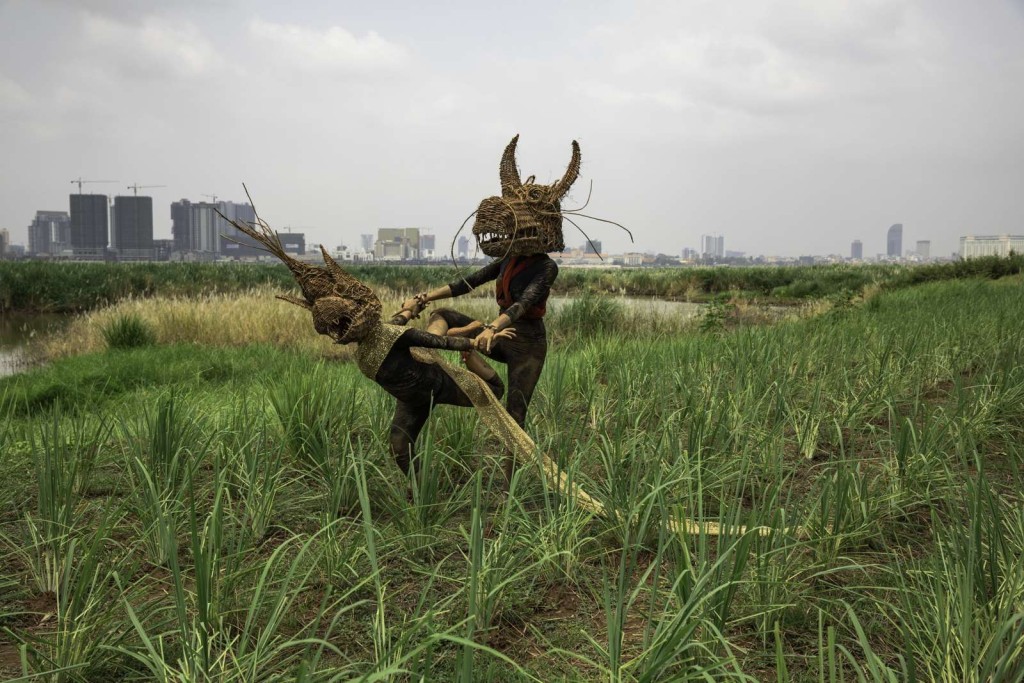Popil, 2018
- Commissioned by Haus der Kunst
- Choreographers and dancers by Mot Pharan and Sot Sovanndy
- Two-channel video, color, sound, 21’59” looped, Edition of 5 + 2AP
- Installation of 2 mask sculptures (woven vines, steel, variable dimensions), Edition of 5 + 1Ap
- Digital Print, 60 x 90 cm, Edition of 4 + 2AP and 80 x 120 cm, Edition of 3 + 2AP
Khvay’s work critically interrogates the multidimensional character of rituals and politics; exposing the humanitarian and ecological impacts of globalization and its concomitant links to the waves of colonialism and migration which continually demarcate and define the spaces and temporalities of Southeast Asia. Informed by extended periods of research and investigation, each of Khvay’s multi-channel filmic works and installations examine the structures and conditions which underpin histories of exchange in both a material and cultural sense. In this sense, Popil develops a complex dance choreography based around the symbolism of the dragon; which both plays towards Euroamerica’s tendency to employ the motif as a blanket symbol for much of East/Southeast Asia, as well as allows for an examination of the manner in which such iconography speaks towards a specifically Chinese or Cambodian mode of identity formation.
The narrative of the work features two dancers performing a modern version of the classical Khmer “Robam kbach boran” dance – a prayer in movement for rain and fertility – which is commonly characterised by overtly curved and curled gestures, said to mimic the movements of a serpent or the flow of water. Overseen by two of the country’s preeminent choreographers, the dancers will enact a contemporary love story of two dragons (one representing Cambodia, the other China), whose twirling, circular movements from North-Eastern Cambodia to Phnom Penh to South-Eastern Cambodia mimics both the flows of the nation’s major rivers, as well as the circulation of capital throughout the nation. Donning masks which the artist has fashioned from woven fishing vines, the work will constitute a critical remapping of the complex geographies and cultural rites which are enfolded within the wider rotating movements of Cambodian and Chinese interests and relations.
Curated by Damian Lentini
https://hausderkunst.de/en/exhibitions/kapsel-10-khvay-samnang
